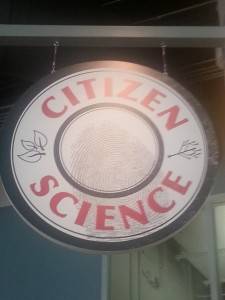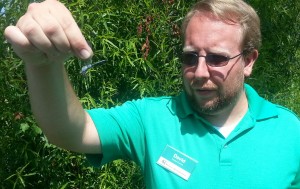
In considering the scope of this summer’s externship with the Museum of Natural Sciences through the Kenan Fellows program, I believe what we are trying to accomplish in the classrooms is a complete revolution in the way we do science education.
Before I had been accepted into the Kenan Fellowship, I had heard direct from Rob Dunn himself, talk about the idea of an issue he had with science education in secondary schools. In general practice, students perform investigations into questions in which we already know the answer. Very, very little “new” science is ever done in the middle or high school setting. This is in stark contrast to how science works at the research and investigation level at universities and institutions around the world.

So the concept of citizen science, a revolutionary idea in itself – where everyday people contribute to the data collection and investigation of a question – is the central theme to my externship this summer. Each of the four labs at the museum are attempting to create and sustain real-world, real-time investigations by partnering with middle school classrooms. Could this be the wave of the future of science education in schools?
I absolutely think so.
At first thought, the concept of citizen science in the classroom is scary. Its messy. There’s no definitive end result. It almost as if you are “building the plane while you’re attempting to fly it.” I think this is what frightens a lot of teachers. BUT we have to realize that this is exactly how science is done. Science, is messy. Uncertain, at times.
And that is the joy of science. Fulfilling our innate curiosity to discover and learn new things and more about the world around us. I have met scientists who have discovered new mammals, learned about mites on our bodies, discovered a new species of dinosaur. I have learned new things by practicing animal trapping and exploring the research collections. What an amazing experience to see real-science done, day in, day out.
Now, how do I connect this to the classroom? Here are my thoughts:
1) I have to be intentional about hands-on, real, and new science in the classroom. Yes, the wealth of scientific discovery over the course of our history must be taught and understood. But building on that knowledge should be a priority as well.
2) Its not that hard. As I process the nuances of my project with the eMammal team, I realize more and more how possible it is to carry out the project. Yes, there’s concerns about spending time on eMammal versus the curriculum. But isn’t the sacrifice worth it for the experience of discovery and investigation? Taylored with thought, I do not think it is as BIG an obstacle I thought it might be.
3) Can my classroom function as a research lab? Working in the Biodiversity Lab, and seeing everyone work on their projects both independently and cooperatively, under the guidance of more senior researched, I’ve questioned myself as to whether this model could also exist in a middle school science classroom. I think maybe it could, and I’m looking forward to try it with my classes.
4) It doesn’t mean giving up on the curriculum. In 6th grade I cover the earth sciences from our solar system, to our little Sun-Earth-Moon relationship, to understanding the earth processes like earthquakes and volcanoes. I cover atoms and matter, heat transfer and wave energy. I cover plant reproduction and behavior and biomes. All of this is outside the scope of the eMammal project, and I look forward to seeing what “real” investigations I can engage my students in with these topics, because these topics are great and fun too.
















